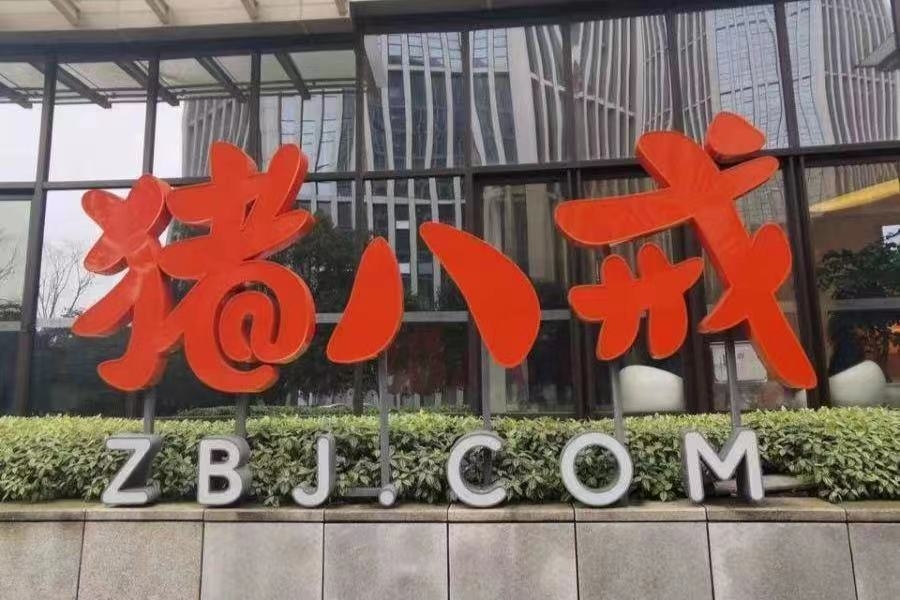Business services firm Zhubajie pursues IPO cash for post-Covid growth

The provider of business software and e-commerce services has filed to list on the Hong Kong Stock Exchange for a second time, but high costs and R&D spending mean it is yet to make a profit
Key Takeaways:
- Revenue and gross profit tumbled at Zhubajie last year when its customers, typically small- and medium-sized enterprises, struggled during the Covid downturn
- The company could stay mired in losses as it boosts R&D spending to harness AI and big data
By Ken Lo
For a leader in the market of business efficiency, Zhubajie Co. Ltd. has taken a rather winding road to a share listing.
In 2015, the Chinese provider of e-commerce and enterprise services for business customers decided against a U.S. listing, aiming instead for a mainland IPO. But the initial paperwork was only filed with regulators four years later. With an uncertain listing timetable, no formal IPO application was made in the end. Last October the company switched focus to the Hong Kong Stock Exchange. The preliminary IPO prospectus expired in April but was swiftly updated and re-filed with the latest earnings figures.
The company provides an e-commerce platform and a broad range of enterprise services for businesses and local governments. It was founded in 2006 with funds of just 500 yuan ($73) by Zhu Mingyue, who used to work in the media. The company’s business covers four main areas: enterprise platform services, smart enterprise services such as taxation and tech support, industrial services and services for government agencies to promote cooperation.
The company’s operations range from building commerce platforms to helping firms find the right talent or service providers, or even providing customizable office spaces or working with local authorities to attract business to industrial parks. In some respects, it has followed the trajectory of a tech company. But it can also be categorized as providing software-as-a-service (SaaS).
By the end of last year, the company had 33.6 million registered users, including 26.3 million corporate employers and 7.4 million service providers. According to a report from iResearch, it is a market leader in providing a comprehensive range of customized services for enterprise clients, ranking first in this part of the market with a share of 25%, based on gross merchandise value (GMV) in 2021. However, the wider market for customized enterprise e-commerce services is more fragmented. Zhubajie controls only 2% of that market, although it ranks second, according to the report.
Pandemic toll on business clients
The company’s sales have steadily increased over the years, with GMV doubling from 5.48 billion yuan in 2020 to 11.39 billion yuan last year. Customer numbers were 260,000 in 2020, 330,000 a year later and 257,000 in 2022. The average transaction value per customer increased from 21,097 yuan to 44,328 yuan over the same period.
The company’s AI-driven matching services help small- and medium-sized businesses (SMEs) find service providers, but each transaction brings in a meager sum in the tens of thousands of yuan. However, this customer group, with its tight budgets, is responsible for more than half of the company’s operating revenue. Last year, for example, business from the enterprise service platform and smart enterprise services accounted for nearly 63% of overall revenue.
The reliance on SMEs has proved a double-edged sword. During the Covid pandemic, major cities such as Shanghai faced prolonged lockdowns, which hit smaller businesses hard and took a bite out of Zhubajie’s earnings. The number of active customers plummeted and the increased value per transaction could not offset the damage. The company’s revenue last year fell about 30% to 541 million yuan and gross profit tumbled 32% to 319 million yuan.
Moreover, the costs of sales, administration and R&D as a share of operating revenue have stayed high in recent years. Last year, for example, those costs were equivalent to 96% of revenue. As a result, the company remains stuck in the red, accumulating losses of 862 million yuan in the past three years. Even adjusted to exclude non-operating items, the loss still amounted to 154 million yuan.
However, the company said it was now expecting to reap the benefits of its development spending, as efficiencies in marketing and management help to bring down the ratio of expenses to total revenue.
Continued R&D drive
However, the company will probably have to keep boosting R&D spending to stay competitive as AI and big data play an increasing role in enterprise services. Cumulative R&D expenditure over the past three years reached 243 million yuan and last year’s R&D expenses wiped out around 15% of revenue compared with 10% in the previous two years.
The company has vowed to keep ramping up R&D in the future, committing at least 10% of revenue to projects such as improving the platform’s matching efficiency, developing SaaS tools, enhancing AI and big data analysis and gaining insights into customer needs.
By the end of last year, the company’s R&D team included 316 staff. About 17% of them were in the fields of software engineering, computer science and information security, with around 77% of them qualified to college degree level or above. This signals an intention to sustain substantial R&D investment, but the company could take longer to erase the red ink from its books as a result.
Like many startups, Zhubajie relies heavily on outside financing to keep the business running. The company has reportedly raised about 2.6 billion yuan since 2015, with capital infusions from the likes of IDG Capital, Chongqing Bo En Technology, Beijing Zhirong Zhuoxin Investment and Jiujiang Zhike Technology. The company has issued 362.4 million shares and, based on a price of 30.56 yuan per share at last November’s financing round, it is valued at around 11 billion yuan.
Based on last year’s revenue of 541 million yuan, its price-to-sales (P/S) ratio stands at 20.3 times, way above its peer companies Mingyuan Cloud (0909.HK) and Weimob (2013.HK), at 3.8 times and 3.6 times respectively. The company is benefiting from an SME business revival after the Covid pandemic has eased. But unless it achieves explosive revenue growth this year or is willing to compromise on the listing price, the ultra-high valuation could put off some investors.
To subscribe to Bamboo Works weekly free newsletter, click here






